
As COVID-19 sweeps the world, healthcare workers continue to provide essential care – but are at high risk. Being exposed to COVID-19 cases threatens workers, patients and entire hospitals with harmful infections.
Contact tracing is one of the only proven strategies to contain the coronavirus and arrest an outbreak spreading through hospital staff. But managing this demands a lot of people and a lot of time.
Technology has offered solutions through the hundreds of contact tracing apps available. However, many healthcare facilities are reluctant to introduce these, despite the urging of groups like the Center for Disease Control (CDC) that technology partners are key in managing the risk of COVID-19.
For healthcare CIOs, using technology can support healthcare communications, medical monitoring and strategies around contact tracers, but only if it doesn’t demand overworked IT teams to become a “software development shop”.
The answer for healthcare can lie in lighter-touch technology which both tracks employee health and improves internal communication around contact tracing. Used in this way, technology is an enabler that supports human interaction, not replaces it – as these examples show.
1. Surveys Reduce Infection Risk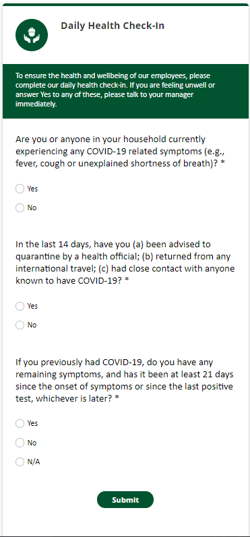
Employee survey software can deliver daily health check surveys that verify staff are symptom-free. Before entering a facility, every healthcare worker completes a short questionnaire on how they’re feeling, what symptoms they may be displaying and any recent health advice they have received.
Employees who report symptoms are disallowed access to the premises and made to stay home – keeping any potential infection stopped at the door.
These surveys can be delivered via hand-held tablets or interactive digital boards. All responses are stored and may be exported daily for record keeping, making COVID-19 screening easier by simplifying and speeding up data analysis.
By integrating this with other data sources, healthcare management can establish a complete picture of staff health, movement and contact with patients, as per World Health Organization guidelines.
Maintaining accurate staffing lists, shift schedules and meeting logs help expedite this by identifying which staff have been on-site, in which location, at what times.
2. Compliance Alerts Ensure Acceptance
To protect workplaces from the risk of infection, healthcare management need assurance that staff are committed to abiding by guidelines and regulations around contact tracing.
Compliance alerts provide this assurance. A message is delivered to staff outlining the situation and what is expected of them – the hospital’s policy around contact tracing and what processes staff are required to follow.
A mandatory “I accept” button is included, which staff must click to acknowledge they have read, understood and will comply with their obligations. If staff don’t click the button, the message is repeated until they do.
Using message recurrence in this way, 100% compliance is guaranteed. That’s critical when the risks of non-compliance are so high – to every healthcare worker, patient and visitor.
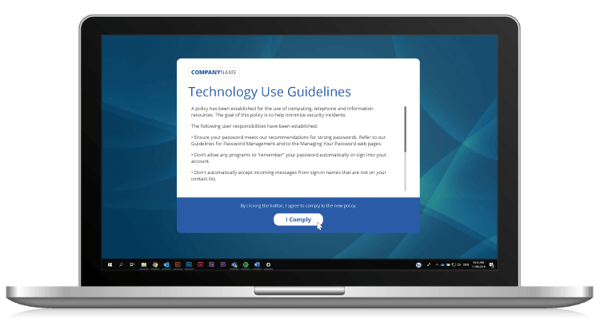
3. Digital Screens Increase Awareness
Hospitals and healthcare facilities are busy, stressful environments. Staff are dealing with diverse challenges and demands throughout their day, so it’s only natural that contact tracing procedures may not always be on their mind.
Reminding them of your policy around this, processes to follow and where to locate more information is important. Reinforce these through digital screen messages – both on desktop computer screens and wall-mounted digital signage in public or common areas.
Corporate wallpapers and Lock Screen messages build staff awareness through repetition. Every time a hospital computer is accessed, the message is displayed – unobtrusively yet powerfully. Delivering messages to computers in this way ensures all staff are reached and reminded, regardless of when they’re online or which shift they’re working.
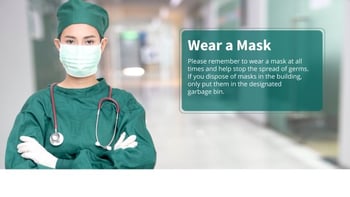
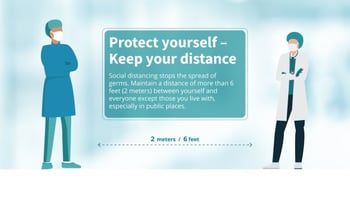
4. Alerts Guarantee Information Flow
The consistent, regular flow of information from healthcare management to staff is essential. Just ask online retail giant Amazon, currently facing a lawsuit filed by three workers around what are claimed to be poor contact tracing efforts. Nowhere is this need for trusted, reliable communication in healthcare more pronounced than when an outbreak of infections strikes.
In this high-risk situation, healthcare staff need to be informed immediately to minimize the danger to other staff and patients. A desktop alert message sent to all hospital computers and mobile devices gets the message out fast, reaching the majority of staff at every location and through every device. Emails are too slow and overhead announcements too disruptive to be reliable in a crisis.
The flexibility of alerts make them ideal for supporting a contact tracing program, with options for full-screen display, recurrence and overriding other applications to help successfully contain the COVID-19 risk when every minute counts.
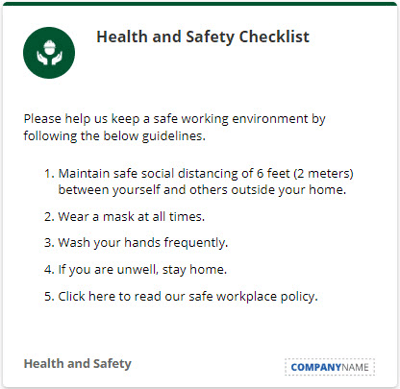
Want to see how these could help your organization?
Try them for yourself with a free 30-day trial of SnapComms.
Contact tracing is crucial in protecting health departments from the risk of a COVID-19 outbreak. As traditional contact tracing programs become harder to manage, technology can play an important role in slowing the spread and delivering better patient care. Effective communication technology can achieve this without the need for significant time, effort or investment.


